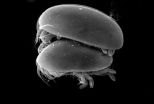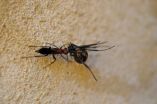(Press-News.org) Researchers from North Carolina State University have developed a new method for forecasting seasonal hurricane activity that is 15 percent more accurate than previous techniques.
"This approach should give policymakers more reliable information than current state-of-the-art methods," says Dr. Nagiza Samatova, an associate professor of computer science at NC State and co-author of a paper describing the work. "This will hopefully give them more confidence in planning for the hurricane season."
Conventional models used to predict seasonal hurricane activity rely on classical statistical methods using historical data. Hurricane predictions are challenging, in part, because there are an enormous number of variables in play – such as temperature and humidity – which need to be entered for different places and different times. This means there are hundreds of thousands of factors to be considered.
The trick is in determining which variables at which times in which places are most significant. This challenge is exacerbated by the fact that we only have approximately 60 years of historical data to plug into the models.
But now researchers have developed a "network motif-based model" that evaluates historical data for all of the variables in all of the places at all of the times in order to identify those combinations of factors that are most predictive of seasonal hurricane activity. For example, some combinations of factors may correlate only to low activity, while other may correlate only to high activity.
The groups of important factors identified by the network motif-based model are then plugged into a program to create an ensemble of statistical models that present the hurricane activity for the forthcoming season on a probability scale. For example, it might say there is an 80 percent probability of high activity, a 15 percent probability of normal activity and a 5 percent probability of low activity.
Definitions of these activity levels vary from region to region. In the North Atlantic, which covers the east coast of the United States, high activity is defined as eight or more hurricanes during hurricane season, while normal activity is defined as five to seven hurricanes, and low activity is four or fewer.
Using cross validation – plugging in partial historical data and comparing the new method's results to subsequent historical events – the researchers found the new method has an 80 percent accuracy rate of predicting the level of hurricane activity. This compares to a 65 percent accuracy rate for traditional predictive methods.
In addition, using the network model, researchers have not only confirmed previously identified predictive groups of factors, but identified a number of new predictive groups.
The researchers plan to use the newly identified groups of relevant factors to advance our understanding of the mechanisms that influence hurricane variability and behavior. This could ultimately improve our ability to predict the track of hurricanes, their severity and how global climate change may affect hurricane activity well into the future.
INFORMATION:
The paper, "Discovery of extreme events-related communities in contrasting groups of physical system networks," was published online Sept. 4 in the journal Data Mining and Knowledge Discovery. The paper is co-authored by Samatova; Dr. Fredrick Semazzi, a professor of marine, earth and atmospheric science at NC State; former NC State Ph.D. students Zhengzhang Chen and William Hendrix, who are both now postdoctoral researchers at Northwestern University; former NC State Ph. D. student Isaac Tetteh, now a lecturer at Kwame Nkrumah University of Science and Technology, Ghana; Dr. Alok Choudhary of Northwestern; and Hang Guan, a student at Zhejiang University. The research was supported by grants from the National Science Foundation and the Department of Energy.
Researchers devise more accurate method for predicting hurricane activity
2012-09-11
ELSE PRESS RELEASES FROM THIS DATE:
A minute crustacean invades the red swamp crayfish
2012-09-11
The small ostracod Ankylocythere sinuosa measures no more than half a millimetre in length and lives on other crayfish. And, Spanish scientists have discovered it for the first time in Europe. The finding suggests that it arrived along with the invader crayfish Procambarus clarkii some 30 years ago but it is still unknown whether it can invade other crustacean species or whether it benefits or damages the expansion of the already established red swamp crayfish.
The red swamp crayfish (Procambarus clarkii) originates from the USA and Mexico and has been present in the Iberian ...
Dartmouth research imparts momentum to mobile health
2012-09-11
Electronic Jewelry for Health
Bracelets and amulets are in the works at Dartmouth's Institute for Security, Technology, and Society (ISTS). Rather than items of mere adornment, the scientists and engineers are constructing personal mobile health (mHealth) devices—highly functional jewelry, as it were.
mHealth is a rapidly growing field where technology helps you or your physician monitor your health through mobile devices. This approach can offer more accurate and timely diagnoses as well as lower health costs. However, smartphones are often used to transmit collected ...
Aussie wasp on the hunt for redback spiders
2012-09-11
University of Adelaide researchers say a small wasp that scientists had forgotten about for more than 200 years is now making a name for itself – as a predator of Australia's most common dangerous spider, the redback.
The wasp (Agenioideus nigricornis) was first described scientifically in 1775 by Danish entomologist Johan Christian Fabricius, thanks to samples collected in Australia during Captain Cook's first great voyage (1768).
"Since then, scientists have largely forgotten about the wasp," says Professor Andy Austin from the University of Adelaide's Australian ...
Diet could combat adverse side-effects of quinine
2012-09-11
Scientists at The University of Nottingham say adverse side-effects caused by the anti-parasitic drug quinine in the treatment of malaria could be controlled by what we eat.
The research, carried out by Nottingham scientists on the University's campuses in the UK and Malaysia, indicates that natural variation in our levels of the amino acid, tryptophan, has a marked bearing on how we respond to quinine treatment. It appears that the lower our levels of tryptophan the more likely it is that we would suffer side-effects. And because tryptophan is an essential amino acid ...
A study analyzes the search for information in stock photography agencies
2012-09-11
VIDEO:
Research carried out at Universidad Carlos III in Madrid analyzes the search and visualization systems used by commercial stock photography agencies, whose estimated annual net sales reach over 150 billion...
Click here for more information.
Stock photography agencies, and not just those companies that dominate the digital photography market, are at the forefront of information search tools. "Their search, visualization and information downloading systems are extraordinarily ...
Vitamin C and beta-carotene might protect against dementia
2012-09-11
Forgetfulness, lack of orientation, cognitive decline… about 700, 000 Germans suffer from Alzheimer's disease (AD). Now researchers from the University of Ulm, among them the Epidemiologist Professor Gabriele Nagel and the Neurologist Professor Christine von Arnim, have discovered that the serum-concentration of the antioxidants vitamin C and beta-carotene are significantly lower in patients with mild dementia than in control persons. It might thus be possible to influence the pathogenesis of AD by a person's diet or dietary antioxidants. 74 AD-patients and 158 healthy ...
Risk-glorifying video games may lead teens to drive recklessly, new research shows
2012-09-11
WASHINGTON -- Teens who play mature-rated, risk-glorifying video games may be more likely than those who don't to become reckless drivers who experience increases in automobile accidents, police stops and willingness to drink and drive, according to new research published by the American Psychological Association.
"Most parents would probably be disturbed to learn that we observed that this type of game play was more strongly associated with teen drivers being pulled over by the police than their parenting practices," said study lead author Jay G. Hull, PhD, of Dartmouth ...
Review: Altruism's influence on parental decision to vaccinate children is unclear
2012-09-11
INDIANAPOLIS -- As outbreaks of preventable diseases such as whooping cough and measles increase in the United States, researchers from the Regenstrief Institute and Indiana University School of Medicine are investigating whether altruism, known to influence adults' decisions to immunize themselves, influences parental decisions to vaccinate their children.
"If enough people are immunized against a particular disease, it prevents outbreaks of that disease and protects the community. This is known as herd immunity, and it's a very important benefit of childhood immunization," ...
Dengue Vaccine Initiative welcomes latest progress in vaccine development
2012-09-11
WASHINGTON, D.C.—September 11, 2012—Today, The Dengue Vaccine Initiative (DVI) welcomed new clinical trial results that reveal progress in developing the first-ever dengue vaccine. In a publication in The Lancet, pharmaceutical company Sanofi Pasteur reported results from the first study conducted to evaluate the efficacy of any dengue vaccine candidate against clinical dengue disease in a population naturally exposed to dengue.
Dengue vaccine development efforts have been difficult because dengue is caused by four different related viruses, known as DENV 1, 2, 3 and ...
LSUHSC research finds ginkgo biloba doesn’t improve cognitive function in MS
2012-09-11
New Orleans, LA – A research study conducted by Dr. Jesus Lovera, Assistant Professor of Neurology at LSU Health Sciences Center New Orleans, and colleagues has found that the herbal supplement Ginkgo biloba does not improve cognitive function in patients with Multiple Sclerosis (MS.) Cognitive impairment affects 40-60% of people with MS, most commonly affecting their processing speed, memory, and executive skills. The research findings were published online ahead of print in Neurology on September 5, 2012.
This study followed up on a promising earlier small study by ...





